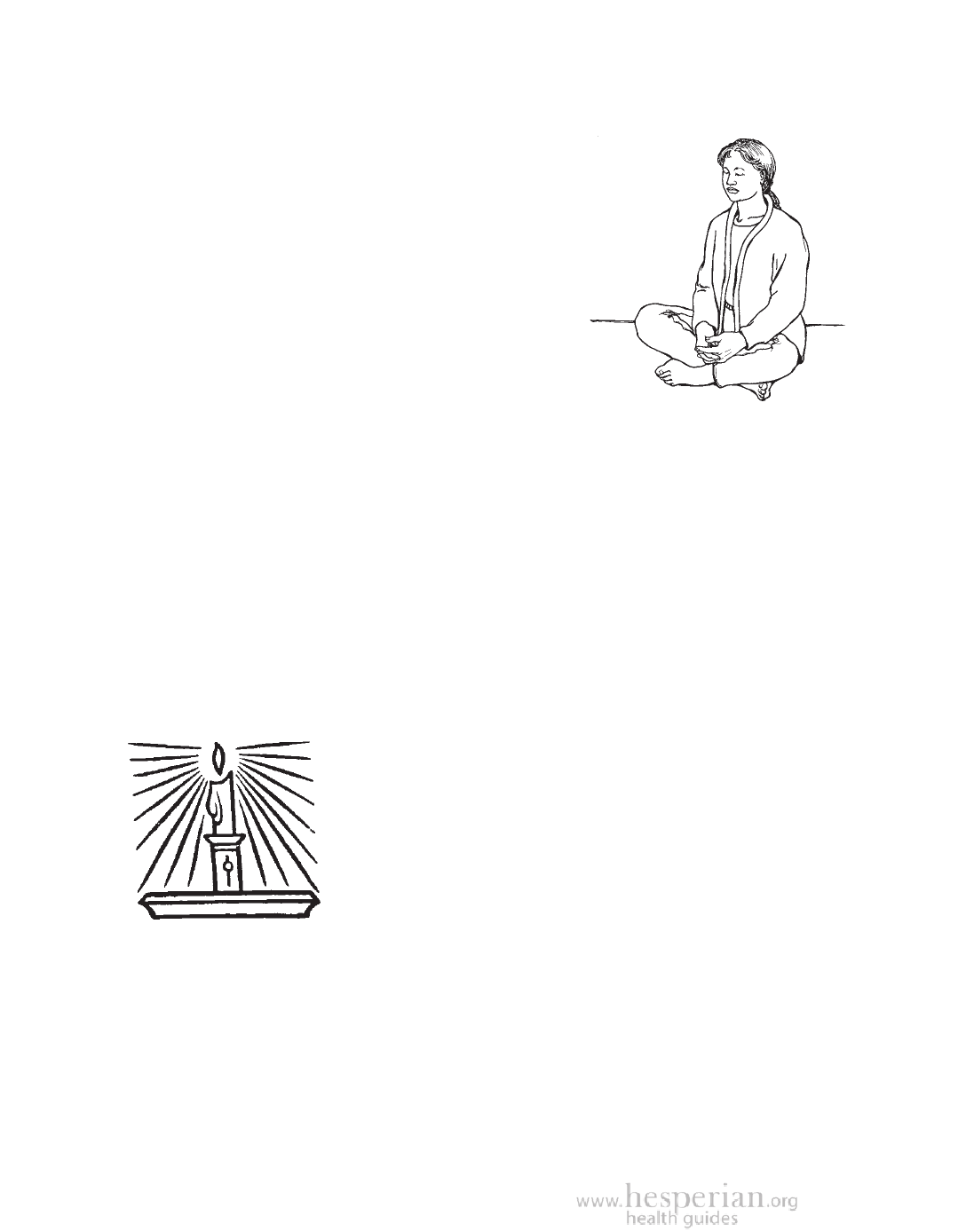
3 46 Ha r m fr o m Toxi c Ch e m i c a l s
Clinic treatments
Health workers at Sambhavna use many kinds of treatments,
including herbal medicines and yoga, breathing and movement
exercises that treat body, mind and spirit. Every person that
comes to the clinic has a choice of which kind or combination of
treatments they want to use. In this way, the clinic encourages
people to participate in their own healing, and the health
workers learn that different treatments work for
different people.
A mental health worker treats problems such
as panic attacks, disturbed sleep, depression,
irritability, and impaired memory. Drugs may
be given, though drugs with harmful effects are
avoided. Herbal medicines, massage, and baths in
hot water and medicinal oils are used to detoxify the
body (cleanse by removing poisons).
Many people practice yoga
to improve the health of
both mind and body.
Yoga helps heal the internal organs, manage pain, and control each
person’s disease process. Though many survivors, especially Muslims who do
not traditionally practice yoga, were skeptical at first, yoga has been found to
be one of the most helpful treatments, particularly for people suffering from
chronic diseases.
Finally, the clinic prepares and provides medicines using local herbs.
All medicines are free of cost, and clinic workers provide information to make
sure that people are well informed about what they are taking. The clinic is
also built and maintained in a way that reduces toxic exposures (see page 40).
A candle against the darkness
The word Sambhavna means “possibility” in the
Sanskrit and Hindi languages. Often, the people
most affected by environmental disasters, such as in
Bhopal, have little hope for recovery, justice, or for
health. By using creativity, caring, and faith in the
ability to heal, the health workers at Sambhavna
have turned despair into hope.
A Community Guide to Environmental Health 2012